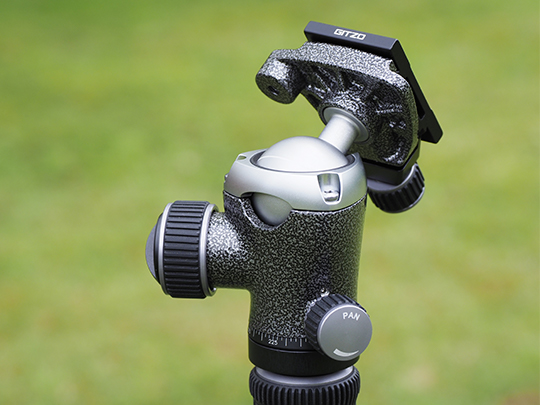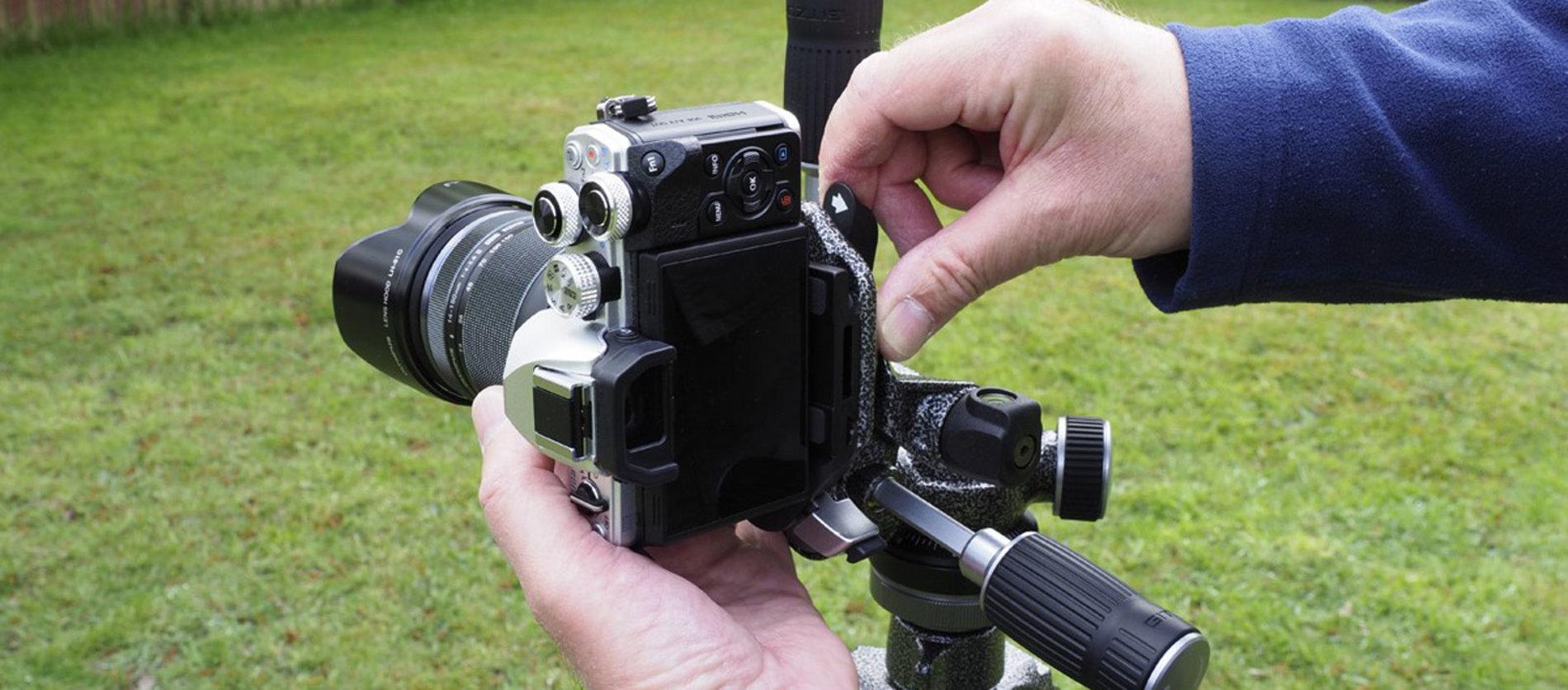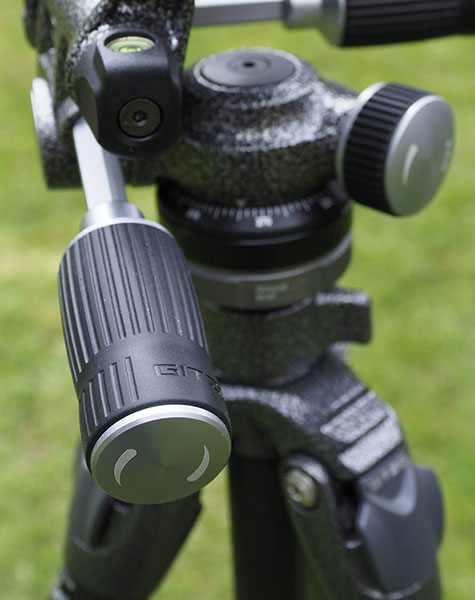Types of Tripod Heads: How to choose a Tripod Head
15.09.2020 | Reading time: 10 minutes
Author: Steve Gosling
Tips for choosing a tripod head
Once you have learnt How To Choose A Tripod the next decision is to determine which type of Tripod Head is best suited to your style of photography. And this is not a decision to be made lightly as this is the part of the tripod system that you will be interacting with on a frequent basis.
3 Way Pan & Tilt Heads
These heads give absolute control enabling the camera to be moved into position with great precision & accuracy with independent control in all three axes. Once in position the head can be solidly locked into place. If further minute adjustments to composition are required these can be made very easily on one axis without impacting on the other two. Smooth and positive operation of the controls is essential.
The Gitzo 3 Way Fluid Head is a relatively recent addition to my kit but having used it extensively over the last twelve months I have come to depend on its reliability and versatility among different types of tripod heads. Its features that make it ideal for landscape and travel photography are: extremely lightweight and compact with a load capacity of 13Kg making it an ideal head for my medium format outfit when required; the fluidity of movement in each axis means it is very smooth in use, making seamless adjustments very easy; a unique rotatable plate holder that enables rapid switching from landscape to portrait format as well as shooting directly up or down; a rotating sprit level supports accurate framing on all axes and it can easily be repositioned to suit the camera’s position.

Ball Heads
Professional Ball Heads for tripods offers more freedom of movement and greater flexibility – releasing one control allows the head to be moved in all directions. This is ideal when the photographer needs to change the cameras position frequently, quickly or on several planes at the same time. Ball heads also tend to be more compact than their 3 Way equivalents.
Better quality ball heads offer additional knobs for panoramic movements and to adjust the friction of the main controls to provide more precision. If you are considering a ball head among tripod heads, then it is also worth checking out the fluidity of movements to ensure the head travels easily & smoothly whilst remaining firmly locked in place when tightened.
Gitzo is a mechanism that wraps and fixes the ball from below against hard iron metal. Minimizing the movement of the ball even when locked, it is possible to prevent deviation of the angle of view and keeping precise framing for tele lens.
I use the Gitzo Center Ball Head with my Series 2 Traveler tripod. It is compact and light (weighing just 500 grams) but has a 14kg load capacity, so will easily hold my mirrorless cameras and lenses. It has independent panoramic and friction controls plus a built-in bubble level to ensure my horizons stay level. The quality of construction of aluminium and steel has resulted in a ball mechanism that moves smoothly, with the camera and lens mounted on top.

Gimbal Heads
Among camera tripod head types, photographers who are using heavy equipment and/or long telephoto lenses might prefer to use a Gimbal Head that will provide superb balance and ease of motion. Not a simple swing-like mechanism, this fluid gimbal provides smooth movement of long lens as well as supporting sudden movements by ignore fluid. These are very specialist pieces of kit but are ideal for the dedicated nature or wildlife photographer.


Additional features
Weight and load capacity.
Tripod heads can vary considerably in weight and the material of construction will have a bearing on this (for example, magnesium heads offer a good combination of lightweight and strength).
The handles/controls.
What material are they made of (rubber grips are easier to grip and use in cold weather) do they operate smoothly, how comfortable are they in use, can they be operated when wearing gloves?
Plate and quick release mechanism.
How does the tripod head connecting plate fix to the camera: most cameras have a ¼” tripod mounting thread but some have a ⅜” one. Can you get the correct size for your camera, is the tripod plate Arca Swiss compatible, is the top of the connecting plate fitted with a non-slip material to prevent the camera twisting or rotating when fitted with a heavy lens?
A tip.
If you own more than one camera it is advisable to buy a connecting plate for each. Changing plates out in the cold or when the light is rapidly changing can be a frustrating experience. Use different tripod heads as needed, like changing lenses.
Weight and load capacity.
Tripod heads can vary considerably in weight and the material of construction will have a bearing on this (for example, magnesium heads offer a good combination of lightweight and strength).
The handles/controls.
What material are they made of (rubber grips are easier to grip and use in cold weather) do they operate smoothly, how comfortable are they in use, can they be operated when wearing gloves?
Plate and quick release mechanism.
How does the tripod head connecting plate fix to the camera: most cameras have a ¼” tripod mounting thread but some have a ⅜” one. Can you get the correct size for your camera, is the tripod plate Arca Swiss compatible, is the top of the connecting plate fitted with a non-slip material to prevent the camera twisting or rotating when fitted with a heavy lens?
A tip.
If you own more than one camera it is advisable to buy a connecting plate for each. Changing plates out in the cold or when the light is rapidly changing can be a frustrating experience.
Use different tripod heads as needed, like changing lenses.


D. How to choose a Tripod Head: Gimbal Heads
Photographers who are using heavy equipment and/or long telephoto lenses might prefer to use a Gimbal head that will provide superb balance and ease of motion. Not a simple swing-like mechanism, this fluid gimbal provide smooth movement of long lens as well as supporting sudden movements by ignore fluid. These are very specialist pieces of kit but are ideal for the dedicated nature or wildlife photographer.
E. Other Tripod Head Features to Consider
In addition to deciding on the type of tripod head that best suits your photography and your way of working it is important to consider other features that will impact upon the experience of using the tripod:
Weight and load capacity – Tripod heads can vary considerably in weight and the material of construction will have a bearing on this (for example, magnesium heads offer a good combination of lightweight and strength). Look at how heavy the tripod head is, what is its maximum load capacity (will it hold your chosen camera and lens combination)?
The handles/controls – what material are they made of (rubber grips are easier to grip and use in cold weather) do they operate smoothly, how comfortable are they in use, can they be operated when wearing gloves?
Spirit levels – are there built in sprit levels, can they be used in landscape and portrait orientation?
Connecting plate and quick release mechanism – how does the tripod head connecting plate fix to the camera (does it require a specialist tool – allen key or screwdriver – and how convenient will you find that in use), most cameras have a ¼” tripod mounting thread but some have a ⅜” thread – can you get the correct size for your camera, is the tripod plate Arca Swiss compatible (a modern standard fitting), is the top of the connecting plate fitted with a non-slip material to prevent the camera twisting or rotating when fitted with a heavy lens?
A tip - if you own more than one camera it is advisable to buy a connecting plate for each. Changing plates out in the cold or when the light is rapidly changing can be a frustrating experience.
Use differenttripod heads as needed, like changing lenses.




Steve Gosling
Steve Gosling is a professional photographer who specialises in producing creative & contemporary landscape and travel images. His B&W photographs have won many awards in prestigious international competitions and his fine art prints have been widely exhibited. He enjoys writing & teaching about photography and has run a successful workshop programme for over 20 years, encouraging and inspiring photographers from across the world...

























